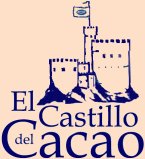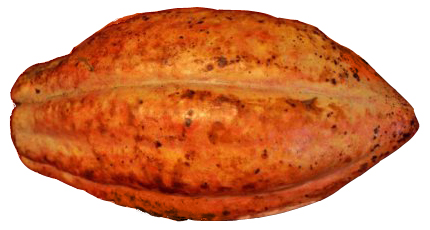Skip to: site menu | section menu | main content

Winner of the Best Business Idea for Development prize
- earlier
- cacao pods
- quality cacao
- the market
The Chocolate
- roasting
- peeling
- milling
- % and flavours
Barras and shots
- barras
- shots
Back to top
From Cacao to Chocolate

To make chocolate from the cacao bean is a long, complicated and delicate process. In these pages we explain the process for you in text and picture. The story starts with the history of cacao , continues by showing how chocolate is done, from the roasting, peeling and milling of cacao to the actual chocolate making with adding flavours and forming the chocolate into different shapes and forms to the end station at El castillo's chocolate packaging line.
To the left you find links that you can follow directly to any stage of the process that you want to learn more about. Down to the right of each page you'll find links saying next that'll take you through the story step by step. Enjoy the ride!
Cacao
Around 1520, The Aztec ruler Montezuma II had 40,000 'loads' of cacao
(around 24,000 cacao grains) in one of his treasuries. The habit of
counting the individual grains is not as strange as it appears when
one realizes that the Aztecs, as well as the Mayas,  used
the cacao beans as currency. Therefore, the beans were as important
as any coin. Cortez was given the beverage Chocolatl at his
visit to the Montezuma court. A clear honor, since "... none but
the rich and noble could afford to drink chocolatl, as it were
literally drinking money". *
used
the cacao beans as currency. Therefore, the beans were as important
as any coin. Cortez was given the beverage Chocolatl at his
visit to the Montezuma court. A clear honor, since "... none but
the rich and noble could afford to drink chocolatl, as it were
literally drinking money". *
The Nicaraguans still drink a cacao beverage as the Aztecs and the Mayas did, and as late as the early 20th century, cacao grains were still used as money in Nicaragua. Wen systemizing the plants, Carl von Linné very appropriately gave cacao the name Theobroma cacao, which translates as Food of the Gods.
The cacao tree has been cultivated in South and Central America (app. within 20 degrees below and above the equator) for three, four thousand years. From his fourth trip Columbus brought cacao with him to Spain, it was 1502 and the history of chocolate as we know it started. Drinking chocolate soon became the new fashion among the nobles in Spain. They didn't change the recipe much, but kept on drinking the chocolatl in more or less as the Aztecs had don even if the Spaniards added some spices, as vanilla, sugar and chile, to suit their tastes.

The Criollo cacao pod
Eating the chocolate was not an issue. Drinking chocolate was an habit exclusive and thus kept a secret for others than the Spanish elite. Dutch and English mariners even dumped cacao beans overboard from conquered Spanish ships as being useless ballast! Until 1606, an Italian visitor to Spain learned how to prepare the beverage and he introduced the luxury in Italy. By this, the luxury spread among Europe's nobles and with that, the development of techniques and recipes took start.
* L Russel Cook 1972, Chocolate Production and Use, Books for Industry, NY.